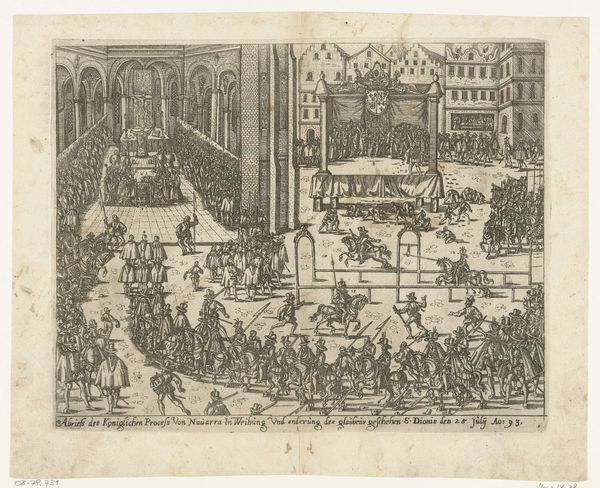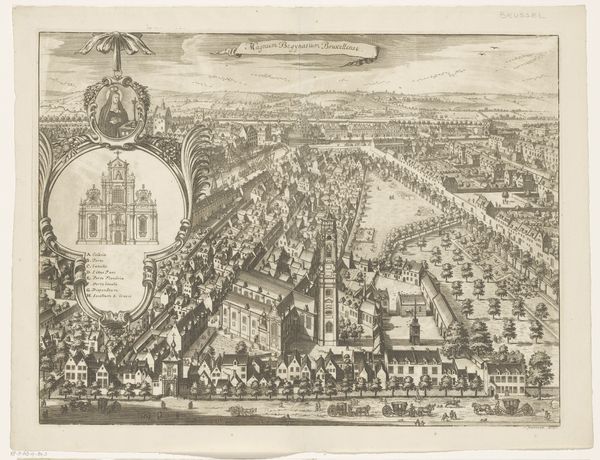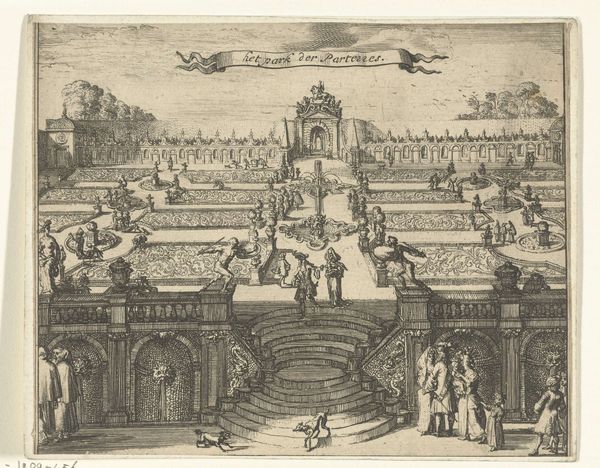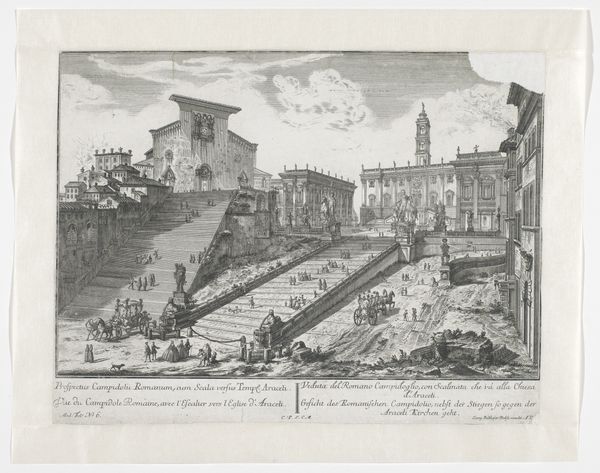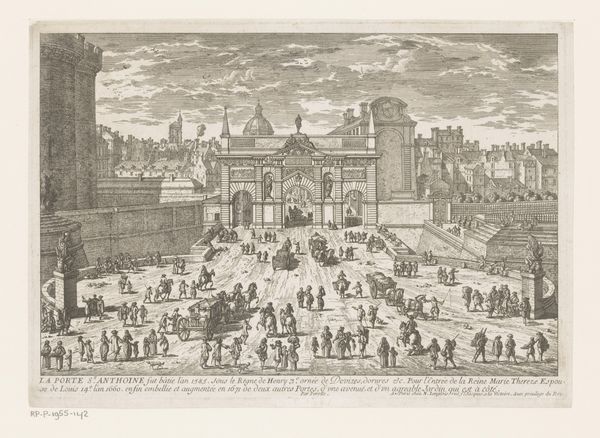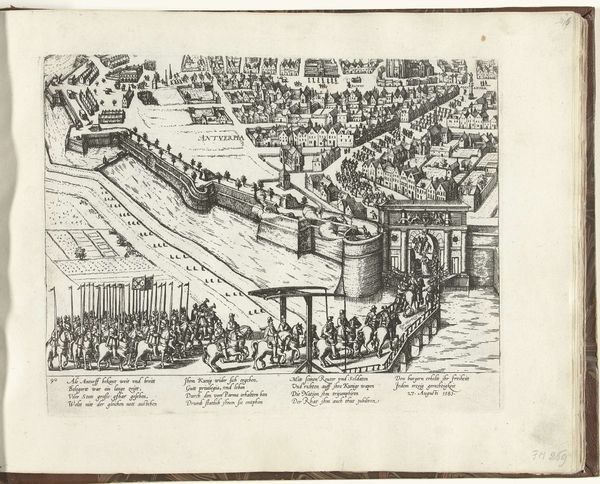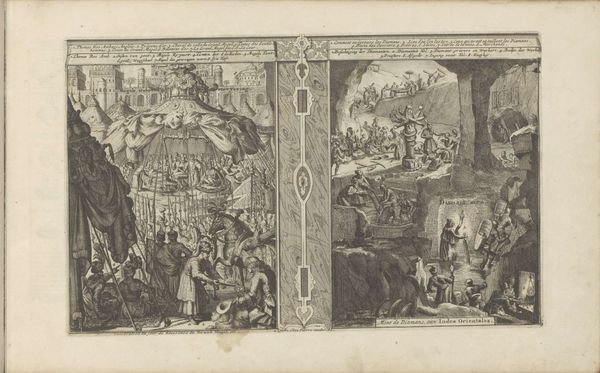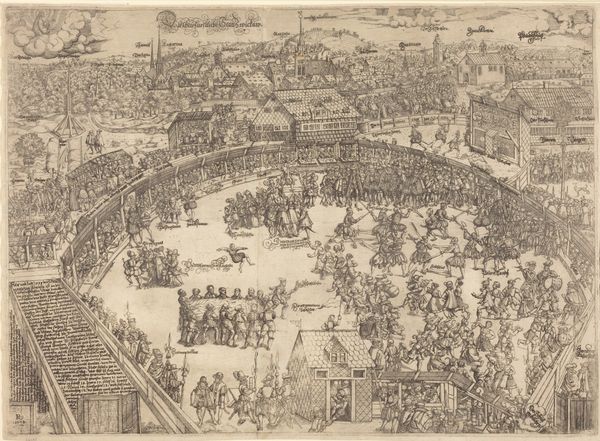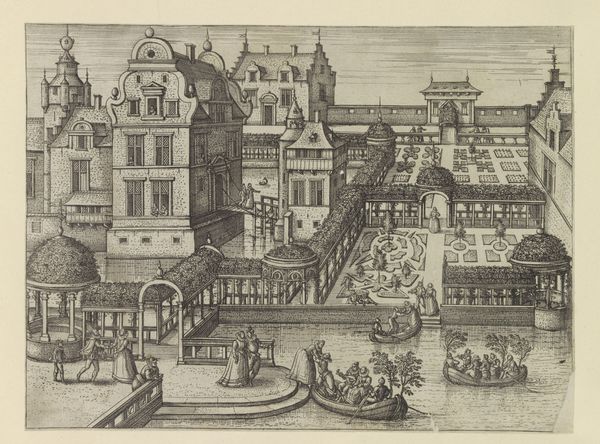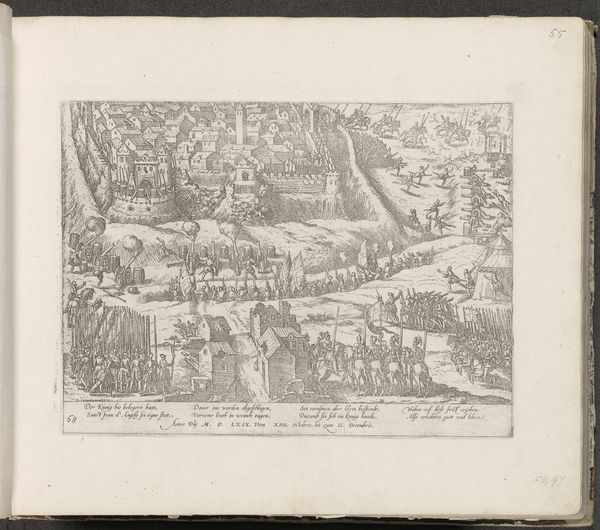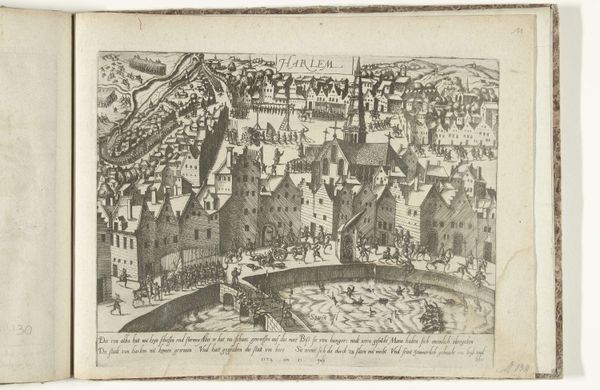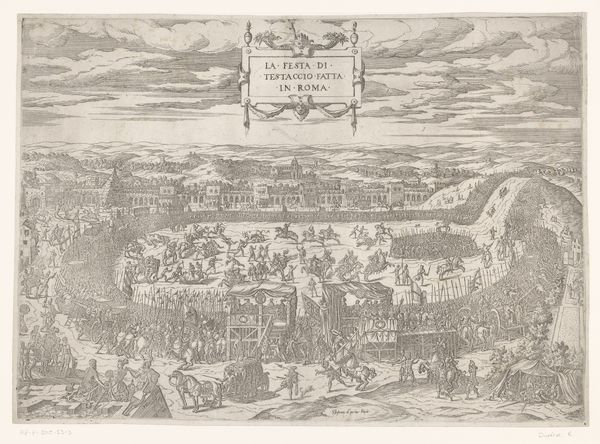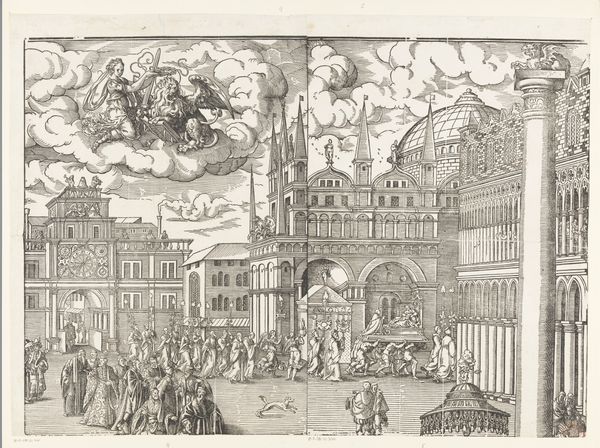
print, engraving
#
baroque
# print
#
asian-art
#
landscape
#
cityscape
#
history-painting
#
engraving
Dimensions: height 213 mm, width 292 mm
Copyright: Rijks Museum: Open Domain
Curator: Take a look at this scene: "Koninklijk hof in Mongolië", or "Royal Court in Mughal", by Romeyn de Hooghe, dating back to somewhere between 1682 and 1733. It's a print, an engraving, depicting quite an elaborate cityscape. What's your initial feeling looking at this? Editor: It's overwhelming! My eye doesn't know where to land. It's a flurry of detail, figures and architecture rendered in fine, nervous lines. Gives the sense of immense activity, almost frenetic energy, but somehow distanced...a dream of court. Curator: A dream of court... I like that. And indeed, within its baroque flair, the artist offers us a vision steeped in symbolism, revealing the power dynamics of the Mughal court through carefully chosen imagery. For example, see how the architecture, that impressive pyramidal structure under the canopy, dominates the whole space. Editor: Absolutely. That central canopy, that stage, is crucial. The geometric rendering contrasts sharply with the fluidity of the figures below. It's clearly the epicenter of power and perhaps more tellingly, inaccessible power. Almost like a sacred mountain. I also note the use of the elephants here and there as motifs. Curator: The elephants are astute—they appear almost as architectural features. Romeyn de Hooghe masterfully employs these visual cues to hint at wealth and authority, weaving them into a narrative about the cultural memory that the Dutch held of the Mughal Empire. Editor: Right, that’s interesting – cultural memory. It’s not necessarily *accurate*, right? It is more like, how a culture chooses to *imagine* another one. The lines create a sort of exotic fantasy space. It lacks any true grounded weight in the practical world, maybe deliberately so. The cityscape itself in the back is a bit like a mirage, shimmering into being as something grander than probably what it was. Curator: Precisely, the shimmering mirage as cultural artefact. Consider how Dutch audiences might have received it. In that sense, is this print less a reflection of Mughal reality and more a mirror reflecting back European perceptions and expectations of empire? Editor: I would say it is certainly the latter, and maybe the elephants, that pyramid are a collective memory from art as well? Visual echoes compounding echoes until what’s represented isn’t any grounded reality at all? That’s art though. To see those themes swirling through art is always something fascinating. Curator: Art isn't necessarily about "truth" so much as evocative, considered choices, yes? The longer you look, the more you are swept into a baroque vision, rather than simply “looking” at history. Thanks for unveiling more dimensions here! Editor: Thank you. It's artworks like these that prompt one to think and remember—which ultimately make a museum visit something worthwhile.
Comments
No comments
Be the first to comment and join the conversation on the ultimate creative platform.
